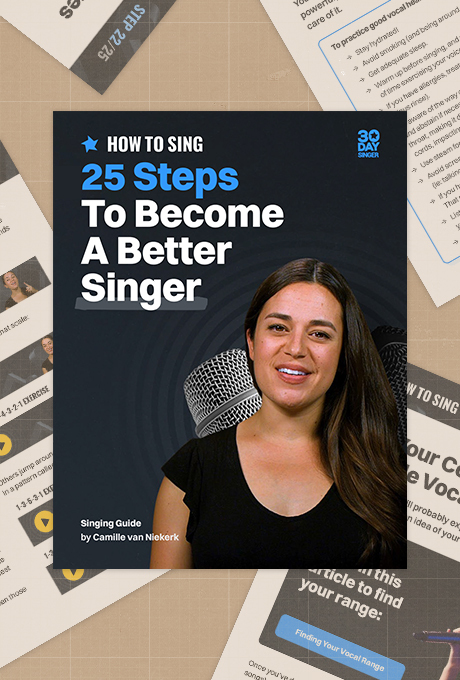Choosing A Key
November 21, 2025
Singing in the right key can change everything about how a song feels—and how your voice responds.
In this episode, Abram and Camille sit down for the first time since before the pandemic, catching up on life, teaching styles, and all the fun (and sometimes chaotic) realities of being singers. One of the biggest topics they dive into is something every singer struggles with at some point: choosing the right key for your voice. It sounds simple, but as they point out, changing keys is one of the fastest ways to improve vocal freedom, vocal tone, and overall comfort while singing.
They talk about how most singers feel locked into the original key of a song, even when it’s totally working against their voice. Camille jokes about it being her “soap box” during live lessons—constantly reminding singers that they have eleven other key options. Whether you’re practicing vocal warmups, developing your chest voice, learning mix voice, or building vocal range, experimenting with keys instantly teaches you what feels best.
Abram and Camille demonstrate how singing the same line in B♭ feels calm and nostalgic, while bumping it to C adds energy and brightness. They also break down registration choices—whether to lean chesty, flip into head voice, or aim for a balanced mix. This is where those infamous “cracks” happen, especially around the G–A area for altos or D–E for tenors. The duo explains why cracks appear, how vowel modification helps, and why breath setup makes or breaks a high note.
They also touch on something every vocalist needs to hear: what sounds good in a studio might not be sustainable onstage. Even pros lower their live keys!
Ultimately, the message is simple: explore, play, adjust. Your best singing comes from curiosity, not sticking to the original key.


